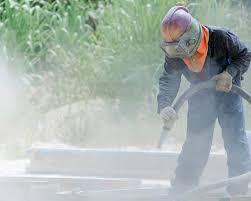How Dry Ice Blasting Works and Why It’s Transforming Industrial Cleaning
Understanding Dry Ice Blasting
Dry ice blasting is an advanced cleaning technique that uses solid carbon dioxide (dry ice) pellets propelled at high speed by compressed air to clean surfaces. This process stands out because it doesn’t rely on water, chemicals, or abrasive materials. Instead, the dry ice pellets vaporize on contact, leaving no residue behind and eliminating the need for post-cleanup of blasting media.
It is increasingly favored in industries where cleanliness, precision, and environmental responsibility are critical.
How Does Dry Ice Blasting Work?
The cleaning power of dry ice blasting comes from three combined effects:
- Impact: Dry ice pellets strike the surface at high velocity, physically dislodging contaminants.
- Thermal Shock: The extreme cold temperature of dry ice causes contaminants to freeze and become brittle, making them easier to break apart.
- Sublimation: The dry ice pellets rapidly convert from solid to gas on impact, expanding and lifting debris off the surface without moisture or abrasive damage.
This unique triple-action process makes dry ice blasting effective on a wide range of materials, from heavy industrial equipment to delicate electronics.
Why Is Dry Ice Blasting Gaining Popularity?
Dry ice blasting offers numerous advantages compared to traditional cleaning methods:
- No Secondary Waste: Since dry ice sublimates, there is no leftover blasting material to dispose of—only the removed dirt or coatings.
- Non-Abrasive: It cleans without scratching or wearing down the surface, extending the life of equipment and materials.
- Environmentally Friendly: It uses recycled CO₂ and avoids harsh chemicals, reducing environmental impact.
- Dry and Chemical-Free: Ideal for cleaning electrical components and machinery sensitive to moisture or chemicals.
- Faster Cleaning and Less Downtime: Equipment can often be cleaned in place without disassembly, speeding up maintenance.
- Safe for Operators: Eliminates the need for toxic solvents and reduces worker exposure to hazardous substances.
Common Industrial Applications
Dry ice blasting is versatile and used in many industries, including:
- Food and Beverage: Cleans production lines, ovens, and packaging equipment without moisture or chemical residues.
- Automotive and Manufacturing: Removes grease, paint, adhesives, and mold release agents from machinery and tools.
- Power Generation: Cleans turbines, generators, and electrical panels without shutting down operations.
- Printing: Removes ink buildup and dust from presses and rollers without dismantling equipment.
- Fire and Mold Remediation: Effectively eliminates soot, smoke, and mold from surfaces like wood, concrete, and brick.
- Electronics and Aerospace: Cleans delicate parts and control panels without risk of damage.
Safety Precautions
Dry ice blasting is generally safe but requires attention to:
- Proper Ventilation: CO₂ gas can accumulate in enclosed spaces, so adequate airflow is essential.
- Personal Protective Equipment: Operators should wear gloves, goggles, and hearing protection.
- Training: Only skilled professionals should operate blasting equipment to ensure safety and effective cleaning.
Conclusion
Dry ice blasting is revolutionizing industrial cleaning by combining effective contaminant removal with environmental safety and surface preservation. Its unique ability to clean without water, chemicals, or abrasives makes it an excellent choice for industries that demand precision and sustainability.
With faster cleaning times, reduced downtime, and zero secondary waste, dry ice blasting is becoming the go-to solution for companies aiming to improve operational efficiency while protecting their equipment and the environment.

